Story by Mark West
I have a 98 Ranger 4×4 with 105k miles. For most of us, this means two things- It’s been a great truck, and the vacuum hubs are junk. Mine actually worked fairly well until recently, but lately I never know if they lock or unlock properly. The other day I tried to go back to 2wd and could tell something was amiss, and when I got home and jacked it up, one hub had unlocked and the other one was still locked. I decided once and for all to figure this thing out and fix it.
This article will describe two things- How the Pulse Vacuum Hubs (PVHs) work, and how to modify the PVHs to add manual control. This mod allows you to engage and disengage each PVH by hand just like manual hubs while still maintaining the vacuum operation (if your vacuum operation still works).
How The PVHs Work:
The hub is engaged when the “ring gear” in the hub is pushed in and held in. The ring gear has a big spring beneath it that pushes it out to keep the hub disengaged. The white two-piece “cylinder thing” is what either holds the ring gear in (thus locking the hub) or allows the ring gear to push itself out (thus unlocking the hub).
The key to understanding how the PVHs work is understanding the white two-piece cylinder thing that is in the hub. Take this cylinder out by putting your needle nose pliers in the slots of the hub cover and turn very slightly counterclockwise about one-quarter inch to unlock it. The cover will pull out, a rubber cover will come out, and the cylinder thing will fall out. If your hub is disengaged, the cylinder will be “together” and if your hub is engaged, the cylinder will be in 3 pieces- two white pieces and a spring in the middle.
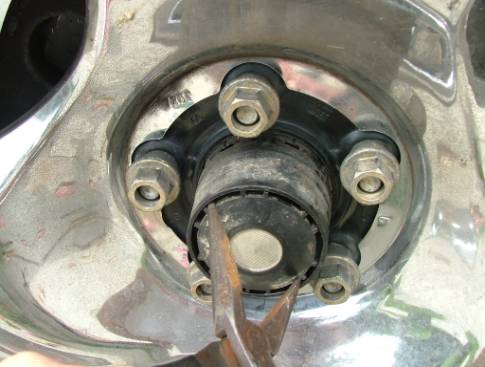
Put the needle nose pliers in a set of slots and turn counter-clockwise about a quarter inch to unlock the cover.
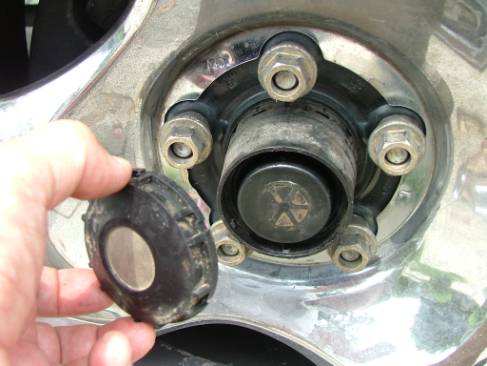
Remove the cover and you’ll see the rubber piece.
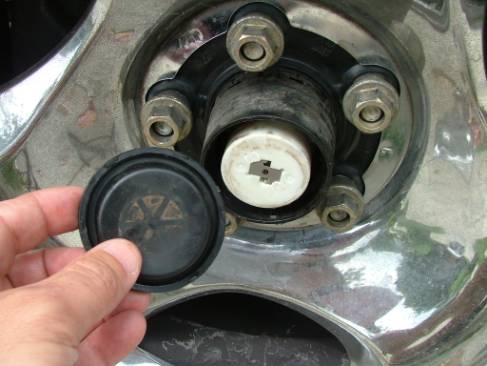
Remove the rubber piece and you’ll see the white plastic cylinder.
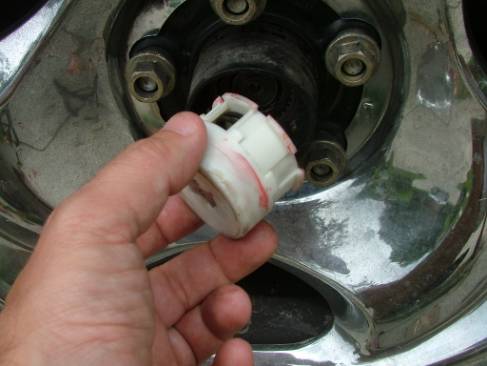
Pull out the white plastic cylinder.
The cylinder thing is kind of like a push-button ballpoint pen. This is the key to understanding the hubs. When you fully compress the cylinder on itself and release it, it will “come apart” which makes it physically long so it pushes on the hub ring gear and therefore engages the hub. When you now push the cylinder together about half way and release it, it will latch on itself becoming locked together and much shorter. When it is short like this, it will not push on the ring gear, so the hub is disengaged.
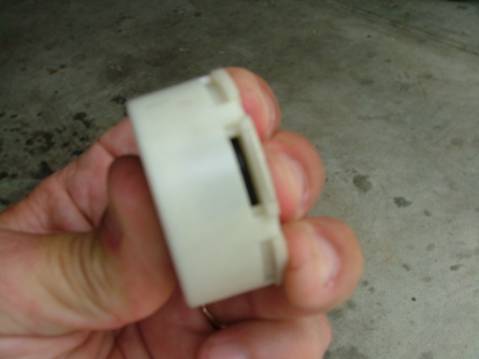
Fully compress the cylinder on itself then release . . . . . . . . .
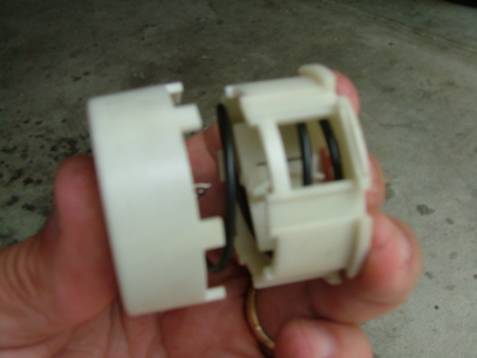
. . . . . . . . . and it will release on itself and come apart. This makes it long so that it presses on the ring gear inside the hub and locks the hub. (There’s not enough room in the hub for it to actually come apart like in this pic.)
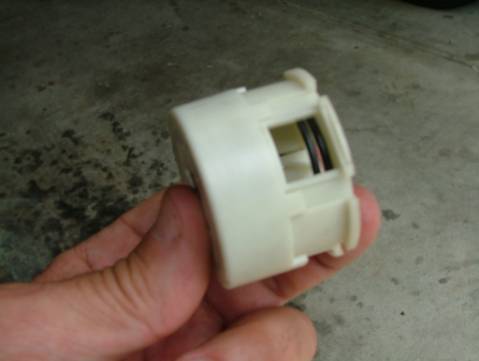
If you press it back together about halfway until you feel a click, then release it, it will lock back on itself, becoming short, so it won’t push on the ring gear, so the hub is unlocked.
So when the cylinder is fully compressed and released (pulsed) it will lock the hub. When the cylinder is then only halfway compressed and released (pulsed) it will unlock the hub. Ford decided to use vacuum to do this. So when 4wd is selected, a long, full vacuum pulse (45 seconds according to my factory service manual) is put on the hub and released. This fully compresses and releases the white cylinder which unlocks the cylinder on itself, making it long, so it pushes on the ring gear and locks the hub. The spring in the cylinder thing is stronger than the spring in the hub, so the hub stays locked. This is why constant vacuum is not needed to hold the hub in a locked condition. The hub will stay locked after the vacuum pulse.
To go back to 2wd, a “low” vacuum pulse is put on the hub (for 10 seconds) and released. This low vacuum pulse is supposed to partially compress the cylinder and release it, causing it to latch on itself, becoming physically short, so it does not push on the ring gear and the hub disengages. Once again, only a pulse of low vacuum is needed, once it’s in 2wd, it will stay there.
I see two problems with this design- Ford uses vacuum to do it, so seals, O-rings, etc have to be good for this to work. This stuff only gets worse with age. The second problem I see is how the “low” vacuum pulse has to be just right to compress the white cylinder only half way and released so it latches on itself for 2wd mode. If this low vacuum pulse is too high or too long, the cylinder will compress too much, unlatch, and therefore keep the hub locked. If the low vacuum pulse is too low or too short, the cylinder won’t compress enough to latch itself, so it will stay unlatched and therefore keep the hub locked. I think the latter is what my truck does since my hubs hold a good vacuum, and I can always use a hand vacuum pump to engage and disengage them.
It dawned on me while looking at this that the hub is basically a “push button” hub, so if I can use my finger to directly push on the cylinder, I can push the cylinder in fully and release to engage the hub, and then push the cylinder half way and release to disengage the hub. This is easily done by a very simple modification to the hub cover allowing finger access to the cylinder.
The hub cover modification is very easy. Take a pair of dikes and cut out the piece of plastic in the middle that looks like a wagon wheel. Then using your fingers, push out the round piece of screen. This puts a finger-sized hole in the hub cover. Put the hub back together by putting the white cylinder back in, then the rubber piece, then put the modified cover back on. The vacuum operation (or at least whatever vacuum operation you still have) will still work, but you can now use your finger to engage and disengage the hub manually. To engage the hub, push the cylinder in fully and release. You will feel the cylinder unlatch and fully push back out toward you and the hub will now be locked. To disengage the hub, push in slightly until you feel a slight click then release. The hub is now disengaged and you will be able to feel that the cylinder is not pushing back at you as hard as it does when the hub is engaged.
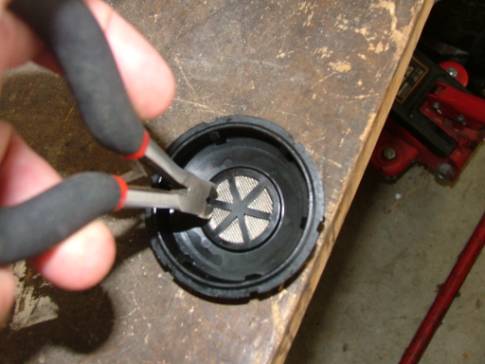
Take a pair of dykes and cut out the “wagon wheel” in the hub cover piece.
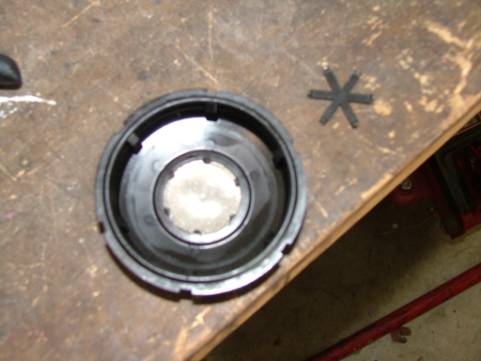
The “wagon wheel” cut out.
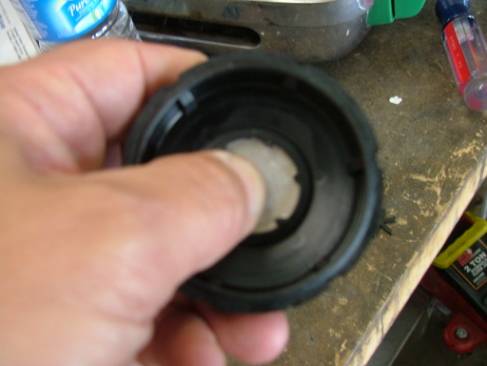
Now push out the piece of screen.
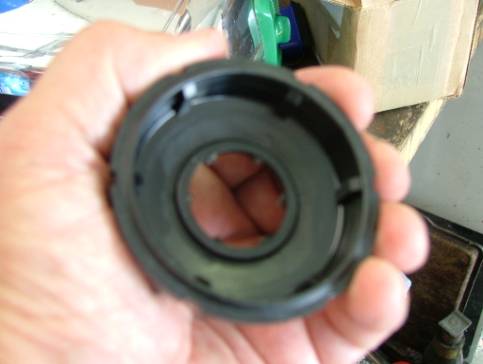
The cover is now modified with a finger sized hole in it.
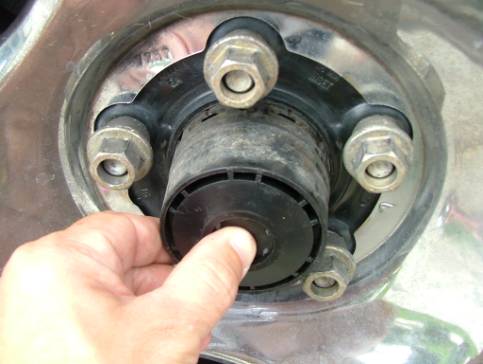
Put the white cylinder back in, put the rubber piece in, then put the modified cover back on. To engage the hub, push all the way in and release. To disengage the hub, push in slowly until you feel a slight click (about half way) then release.
When the hub in engaged, you will feel the cylinder pushing out very hard, when disengaged, you will feel that the cylinder is not pushing our very hard and actually has some “play” in it.
You now have manual hubs for zero dollars and a few minutes of work.
Feel free to contact me about this article:
